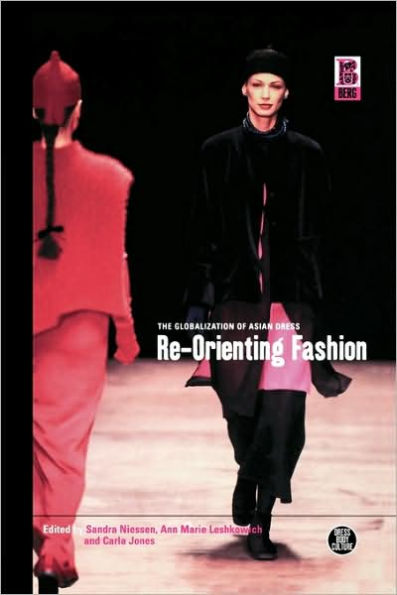When Hong Kong entrepreneur David Tang opened his Shanghai Tang boutique on New York's Madison Avenue, it was not an isolated example of the globalization of Asian fashion. Further evidence is written on the labels in our closets, and paraded in the form of salwaar-kameez and silk sarongs by the rich and famous of London. The phenomenon merits scrutiny. This vanguard attempt points to the colonial era as the origin of fashion globalization, and describes its development as paralleling the gradual take-over of Asian daily wear by Western dress. From indigenous Batak weavers to Hong Kong designers, and from Indonesian businesswomen's power suits to Korean feminists' national costume, this book explores the sartorial interface of East and West. The globalization of Asian dress needs to be understood as part of an ongoing Orientalism that construes Asia as a feminine Other to the masculine West. The conventional Orientalist definition of fashion as an exclusively Western phenomenon has proved self-fulfilling in both East and West so that the conceptual boundary between the two is continually reasserted by design. Paying close attention to Asians' decisions about what clothing to make, sell, buy, and wear, the case studies in this book challenge Orientalist stereotypes of Asian style as passive and traditional and highlight how these actions are often made invisible by global cultural, rhetorical, and material practices that feminize Asia and the fashion world. This timely book will be of interest to dress and fashion theorists, anthropologists, sociologists, historians, art historians and all those interested in globalization, Orientalism and their effects.
1111951523
Re-Orienting Fashion: The Globalization of Asian Dress
When Hong Kong entrepreneur David Tang opened his Shanghai Tang boutique on New York's Madison Avenue, it was not an isolated example of the globalization of Asian fashion. Further evidence is written on the labels in our closets, and paraded in the form of salwaar-kameez and silk sarongs by the rich and famous of London. The phenomenon merits scrutiny. This vanguard attempt points to the colonial era as the origin of fashion globalization, and describes its development as paralleling the gradual take-over of Asian daily wear by Western dress. From indigenous Batak weavers to Hong Kong designers, and from Indonesian businesswomen's power suits to Korean feminists' national costume, this book explores the sartorial interface of East and West. The globalization of Asian dress needs to be understood as part of an ongoing Orientalism that construes Asia as a feminine Other to the masculine West. The conventional Orientalist definition of fashion as an exclusively Western phenomenon has proved self-fulfilling in both East and West so that the conceptual boundary between the two is continually reasserted by design. Paying close attention to Asians' decisions about what clothing to make, sell, buy, and wear, the case studies in this book challenge Orientalist stereotypes of Asian style as passive and traditional and highlight how these actions are often made invisible by global cultural, rhetorical, and material practices that feminize Asia and the fashion world. This timely book will be of interest to dress and fashion theorists, anthropologists, sociologists, historians, art historians and all those interested in globalization, Orientalism and their effects.
46.95
In Stock
5
1

Re-Orienting Fashion: The Globalization of Asian Dress
296
Re-Orienting Fashion: The Globalization of Asian Dress
296
46.95
In Stock

Product Details
| ISBN-13: | 9781859735398 |
|---|---|
| Publisher: | Berg Publishers |
| Publication date: | 04/01/2003 |
| Series: | Dress, Body, Culture |
| Pages: | 296 |
| Product dimensions: | 6.14(w) x 9.21(h) x 0.62(d) |
About the Author
From the B&N Reads Blog
